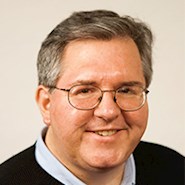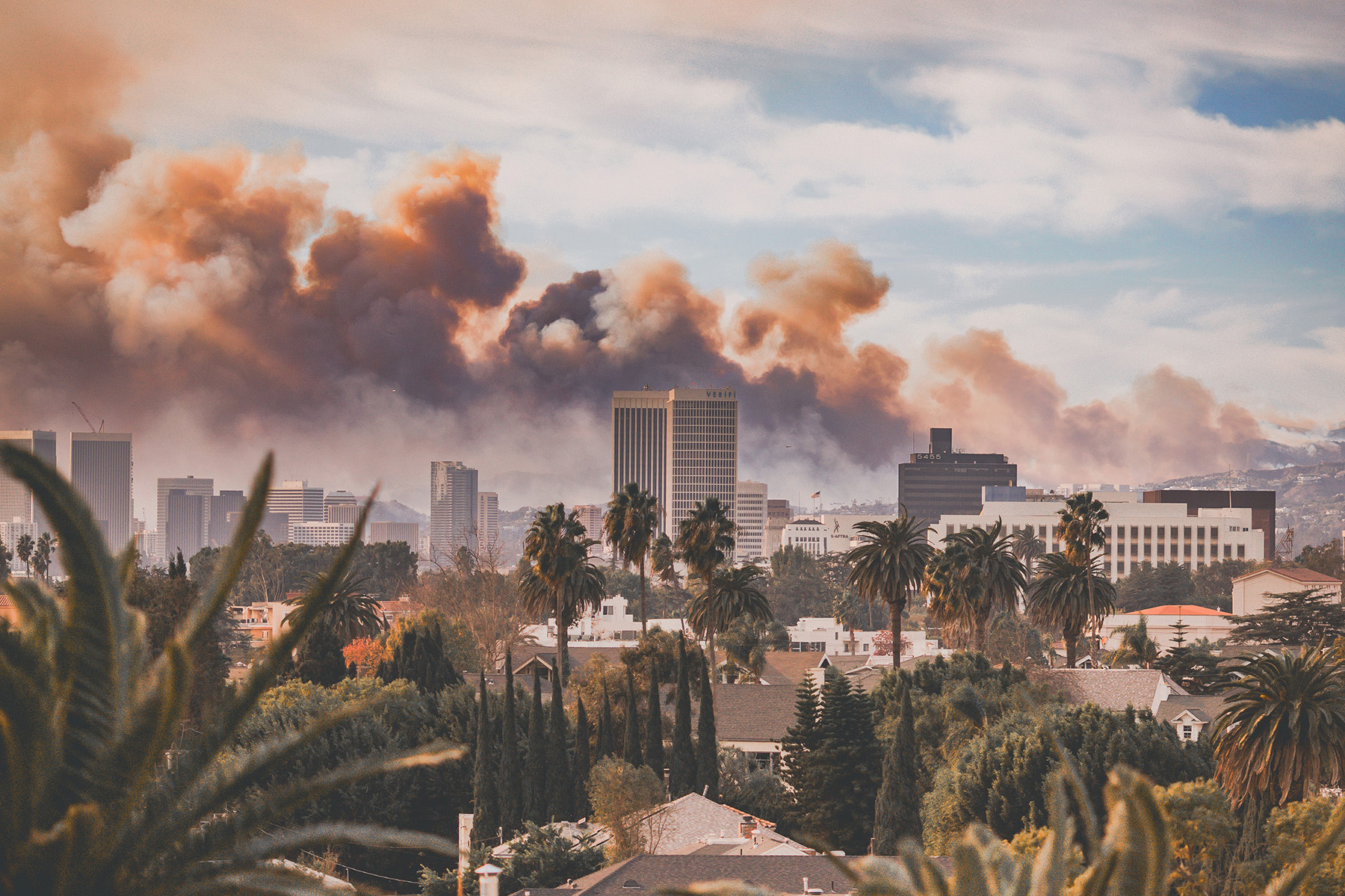
By Robert L. Reid
Civil engineers have a critical role to play in the aftermath of the January wildfires that devastated the Los Angeles region.
Los Angeles has long ranked high on ASCE’s annual list of the Best Places for Civil Engineers, which generally focuses on such criteria as salaries, cost of living, and job availability. Tragically, while the 2025 Best Places data were still being analyzed, the Los Angeles County region suffered an unprecedented series of wildfires that raged for more than three weeks during January, killing at least 29 people, burning more than 49,000 acres, and destroying more than 16,000 structures.
Civil Engineering spoke with more than a dozen wildfire experts in the design industry, academia, and public policy to explore the critical role that civil engineers will play in the rebuilding of the built environment in and around LA County, as well as ways to better protect the region from future fires. In these efforts, many disciplines will be involved, including those educated in fire science, forestry, architecture, and community resilience, among other fields.
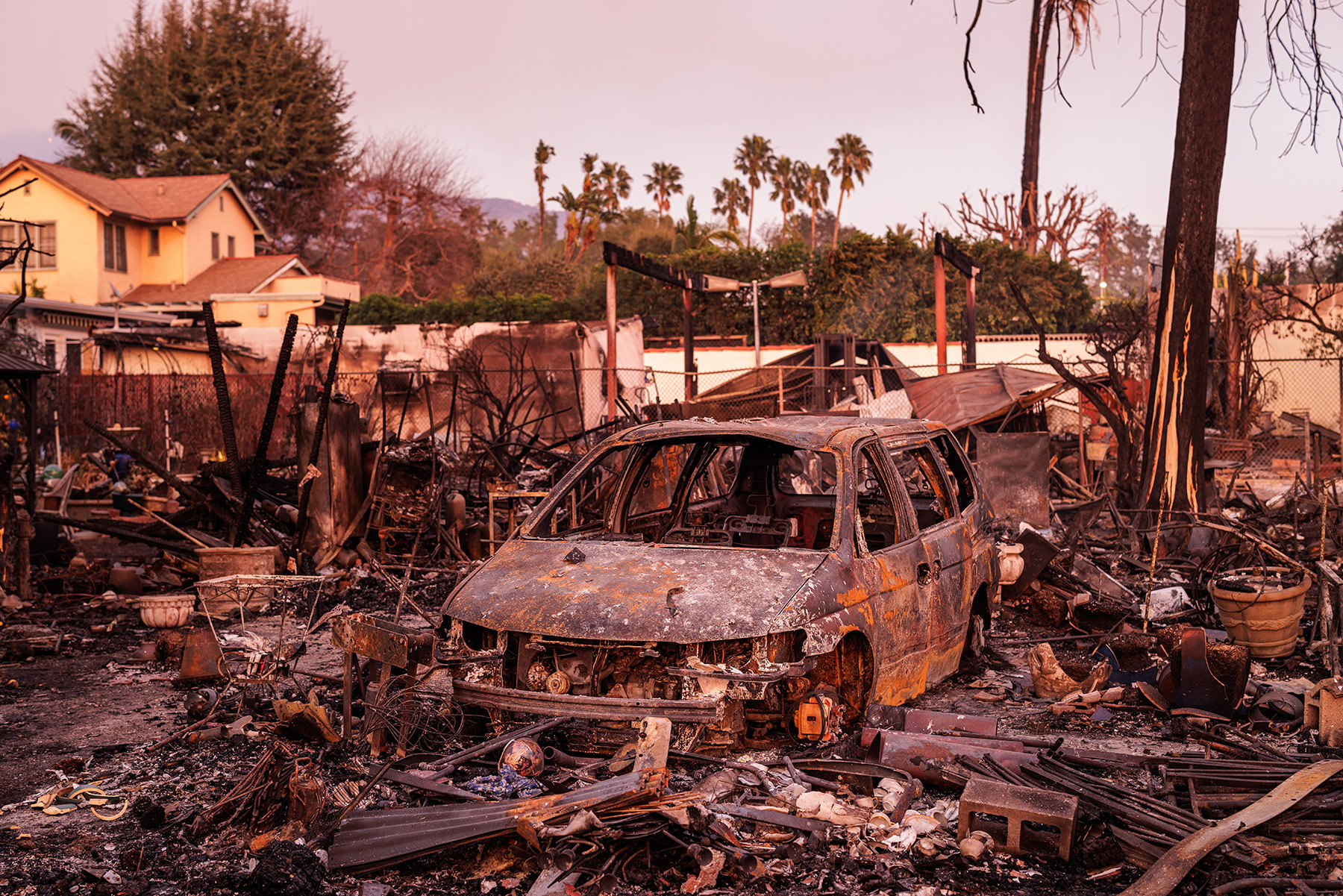
But civil engineers are uniquely qualified to perform this work because they are specifically educated in how critical aspects of our infrastructure are designed and work together, notes Erica Fischer, Ph.D., P.E., M.ASCE, an associate professor and the Glenn Willis Holcomb Professor in Structural Engineering at Oregon State University.
“We understand the functionality of our cities and our towns and our society, based on our civil infrastructure,” explains Fischer, who visited the LA region in the aftermath of the wildfires to examine the mechanisms of how the fires had spread from the wildlands into communities, as well as to collect data on the characteristics common to structures that survived the inferno.
Moreover, civil engineers are familiar with the rebuilding of other cities devastated by natural disasters, such as New Orleans after Hurricane Katrina in 2005 and Christchurch, New Zealand, after earthquakes in 2010 and 2011, Fischer says. Thanks to their education and experiences, civil engineers “have a good handle for (which) infrastructure needs more protection” because of the social and economic consequences that will occur if the most vital infrastructure is damaged, Fischer explains.
Water and fire
As civil engineers help LA recover and prepare for the next conflagration, they will face multiple issues related to water, especially drinking water quality. Unfortunately, some of the key issues surrounding wildfires and water are still relatively new, says Jodi Ryder, Ph.D., a research engineer and the water quality and ecology lead in the post-wildfire program at the U.S. Army Corps of Engineers’ Engineer Research and Development Center, headquartered in Vicksburg, Mississippi.
Ryder explains that the wildfire that struck Gatlinburg, Tennessee, in November 2016 was “one of the first big fires recently to cross” the wildland-urban interface, which is the boundary between undeveloped areas and the infrastructure of human development.
“We’re still, from a water quality standpoint, trying to figure out what are the issues in those kinds of fires,” Ryder says.
Specifically, the Tubbs Fire that struck the Santa Rosa region of Northern California in October 2017 helped civil engineers realize that even buried drinking water infrastructure that seemed unharmed could actually be physically or chemically damaged during wildfires, especially by contaminants known as volatile organic compounds, or VOCs, says Andrew Whelton, Ph.D., a professor of civil and construction engineering and environmental and ecological engineering at Purdue University (see “Fire and Water,” Civil Engineering, January/February 2021, pages 42-47).
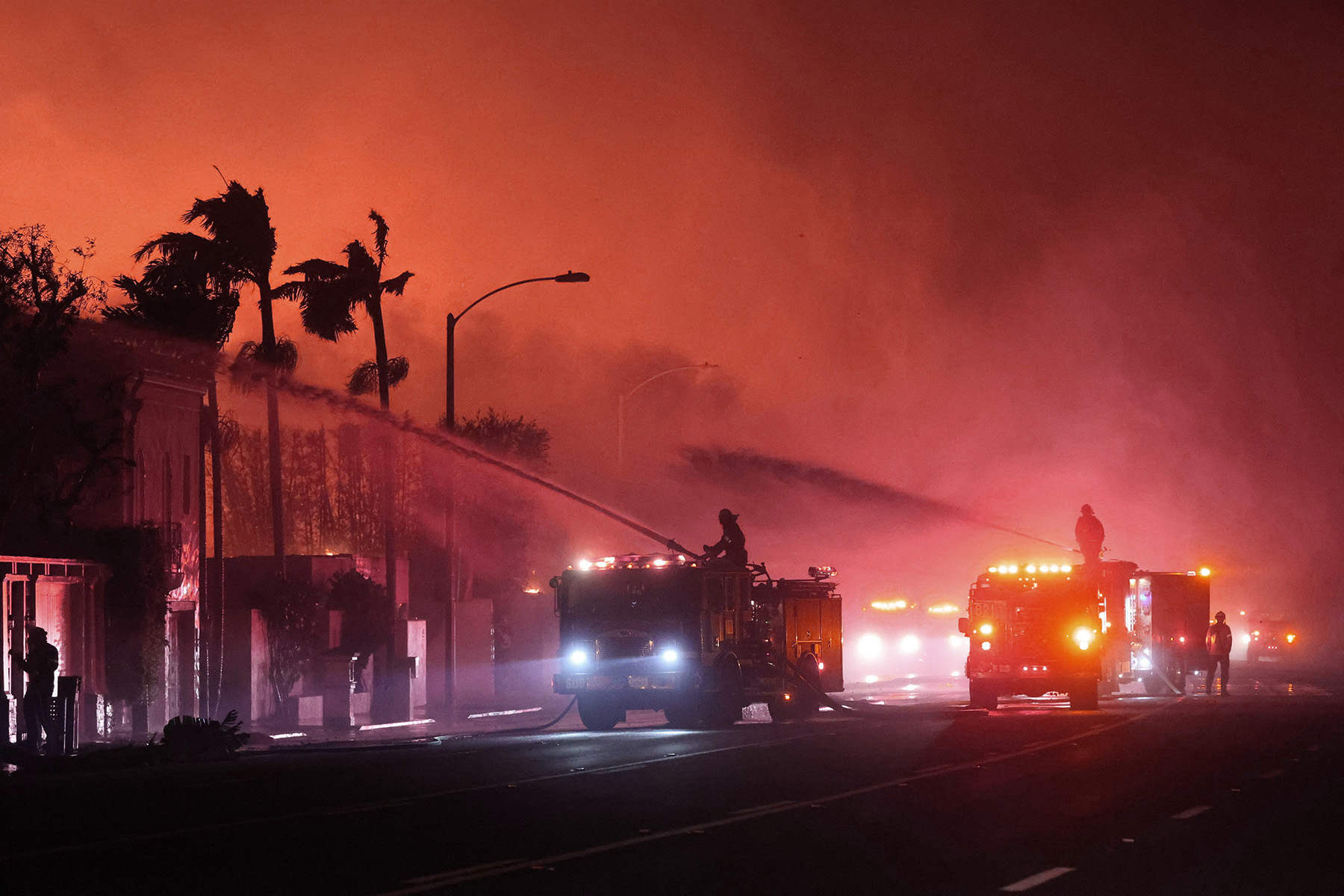
Whelton and other Purdue researchers recently visited the LA region, working with teams from the University of California at Los Angeles and Loyola Marymount University, as well as homeowners, county and state officials, and utilities. The teams collected water and soil samples to check for possible contamination and inspected burn zone sites for other hazards.
The engineering measures used to protect against drinking water contamination include physical barriers, such as placing absorbent socks or silt fences around burned properties to help keep potential contaminants on-site, as well as placing barriers in culverts or storm drain openings to prevent material from entering the water system, Whelton says. Water systems can also be pressure washed, and polymer materials can be sprayed onto debris to reduce the contaminants that run off the property during rain events, he adds.
In extreme cases, civil engineers might even allow the introduction of contaminants into the drinking water system as an emergency measure to keep the water flowing. That is what happened in Louisville, Colorado, during the December 2021 Marshall Fire when “we were on the verge of running out of water” for the firefighters, says Kurt Kowar, P.E., Louisville’s director of public works and utilities. “So, we had to make some (quick) decisions,” Kowar explains, which included opening the valves to let untreated water into the drinking water system to keep the hydrants supplied.
As a result, “the system was full of raw water for several days” and later had to be thoroughly flushed with clean, treated water that initially featured higher-than-normal levels of chlorine to neutralize any remaining bacteria in the system, Kowar says.
Because the Louisville water system was gravity fed, the operators were able to introduce the raw water into the pipes even though the wildfire had knocked out power, adds Cory Peterson, P.E., Louisville’s deputy director of utilities. But other utilities might have to proactively install equipment to bypass the treatment system and make such connections possible, says Whelton, who consulted with the Louisville water system following the Marshall fire.
During the LA wildfires, low water pressure and even dry hydrants plagued firefighting efforts. Despite conspiracy theories shared on social media, the explanation for this lack of water was simple and fundamental: The scale of the fires overwhelmed the system’s capacity, explains Mark Pestrella, P.E., M.ASCE, director of Los Angeles County Public Works.
“We’re used to seeing the fire department suppress fires on an individual structure or even multiple structures,” Pestrella says. But he stresses that no municipal water system in the United States, and probably none anywhere in the world, was built to fight fires on the scale of the recent inferno in Southern California, where 10 or more buildings in a neighborhood were burning at the same time, and multiple large-scale fires erupted throughout the region, almost simultaneously.
Sliding sites
In addition to confronting contaminated water systems, civil engineers in the LA region must address the potential for increased flooding because “even a normal rainfall event can cause a significantly larger flood than it would have before the fire,” says Travis Dahl, Ph.D., P.E., a research engineer and deputy program manager for post-wildfire research and development at the Corps’s ERDC.
Wildfires often destroy vegetation that used to help slow down rainwater runoff, and they can even cause “physical changes to the ground that limit the ability of water to soak in,” Dahl explains. Such changes can lead to water running off faster and in greater volumes, which increases the potential for floods — a risk that can last for up to a decade following the wildfire itself, Dahl adds.
After a wildfire, the risks of rain-related landslides and mudslides also increase, as do the risks for a particular type of ground movement known as a debris flow, which features a “mix of rock, plants, and even boulders or trees in addition to mud,” according to the February 20 news article, “Perfect storm: Megafires set the stage for debris flows” from the University of California. It is important for civil engineers to recognize the difference between these various events because their characteristics and mitigations are different, notes Ian Floyd, Ph.D., the wildfire research leader at the ERDC.
For example, mudslides and landslides generally do not involve internal movement or deformation, which is a feature of debris flows, Floyd says. And while bank stabilization or riprap can help mitigate a landslide, a debris flow might require a temporary structure known as a check dam, Floyd explains.
Civil engineers will also have to deal with another sort of debris — the waste and ash, sometimes toxic, from burned houses, other buildings, vehicles, and everything else destroyed by the fire. The region has an estimated 4.5 million tons of such fire debris, which represents nearly half of LA county’s entire annual waste load, says Pestrella.
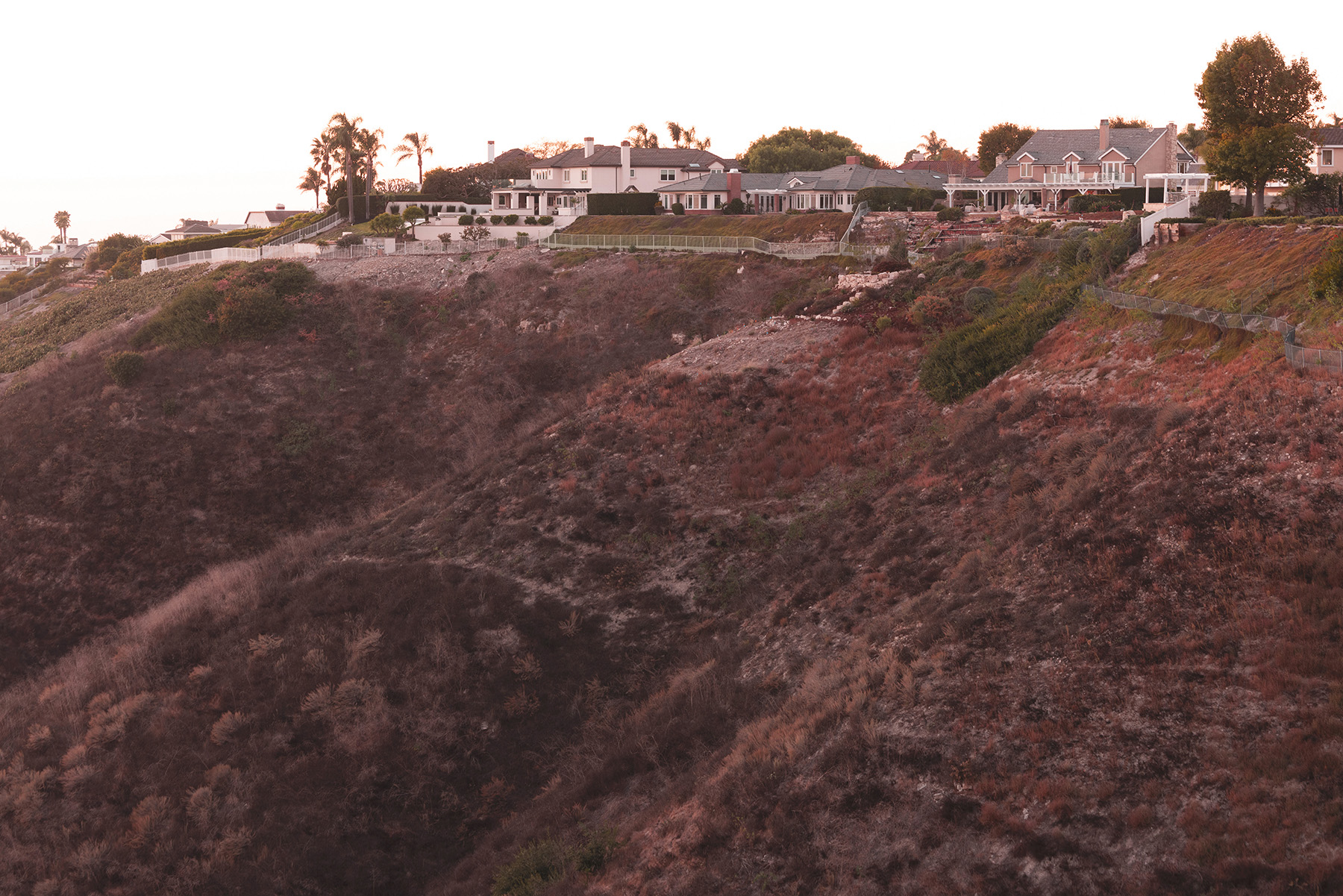
The county’s public works department is partnering with the U.S. Environmental Protection Agency, the Corps, and private contractors to remove and safely dispose of all that material. It is a daunting task, especially since the county is already coping with millions of cubic yards of debris from other fires over the past five years or so, Pestrella says.
During the removal of fire debris from properties, anywhere from 6 in. to a foot of soil might also be removed in locations to ensure that all potential contaminants are eliminated, says Kowar. These grade changes can alter drainage at the site and potentially lead to significant erosion unless there are deliberate efforts to preserve or restore historical drainage patterns or address new drainage issues as they arise during the new grading or landscaping, he warns.
A model approach
As civil engineers work to help rebuild the burned-out neighborhoods of the LA County region, they can turn to a software tool that essentially predicts which buildings in a community will burn in a wildfire and how vulnerable other buildings are if the fire spreads. This computer model — the Asynchronous Graph Nexus Infrastructure for Network Assessment of Wildland-Urban Interface Risk, or AGNI-NAR — was developed by Hussam Mahmoud, Ph.D., F.SEI, F.ASCE, the George T. Abell Professor in Infrastructure in the department of civil and environmental engineering at Colorado State University.
Mahmoud, who discussed his research in Civil Engineering last year (see “Taming Fire,” Civil Engineering, July/August 2024, pages 56-63), recently used the model to analyze buildings that burned in one of the largest of the LA events, the Palisades fire, which destroyed nearly 24,000 acres in Pacific Palisades and parts of Malibu. When researchers considered what efforts might have reduced the damage, the model demonstrated that a combined approach of removing specific vegetation and hardening buildings could have reduced the vulnerability of the buildings studied by as much as 71%, Mahmoud reports.

Potential mitigations for buildings include measures such as using more fire-resistant materials — concrete rather than wood, for example — and establishing vegetation-free buffer zones around buildings. Civil engineers can also work to ensure that flammable external structures, such as wooden fences, are not touching the building or so close that they will easily allow fire to spread to the main structure. Vents and other openings into the structure should be protected by mesh or some other barrier to keep hot embers from blowing inside and igniting the building from within, Mahmoud adds. Of course, such mitigation efforts are far from perfect; there are plenty of concrete and masonry buildings that have burned in wildfires, Mahmoud notes.
Still, his model does suggest that not every building in a fire-prone area needs fire mitigation, nor does every tree or other vegetation need to be removed. Instead, the model can help determine “the optimal solution to lower the vulnerability for the whole community,” Mahmoud says.
Power and poles
Electrical utilities should also consider the use of alternative materials and other measures to reduce the role their infrastructure can play in wildfires. Wood poles dominate America’s electrical distribution network, which includes the wires that connect individual homes or buildings to the substations that get power from long-distance transmission lines, says Otto Lynch, P.E., F.SEI, F.ASCE, a vice president of Bentley Systems and the head of Bentley’s Power Line Systems. Those wood poles can be replaced with less-flammable materials, such as steel and concrete, as well as fiber-reinforced polymer, Lynch says.
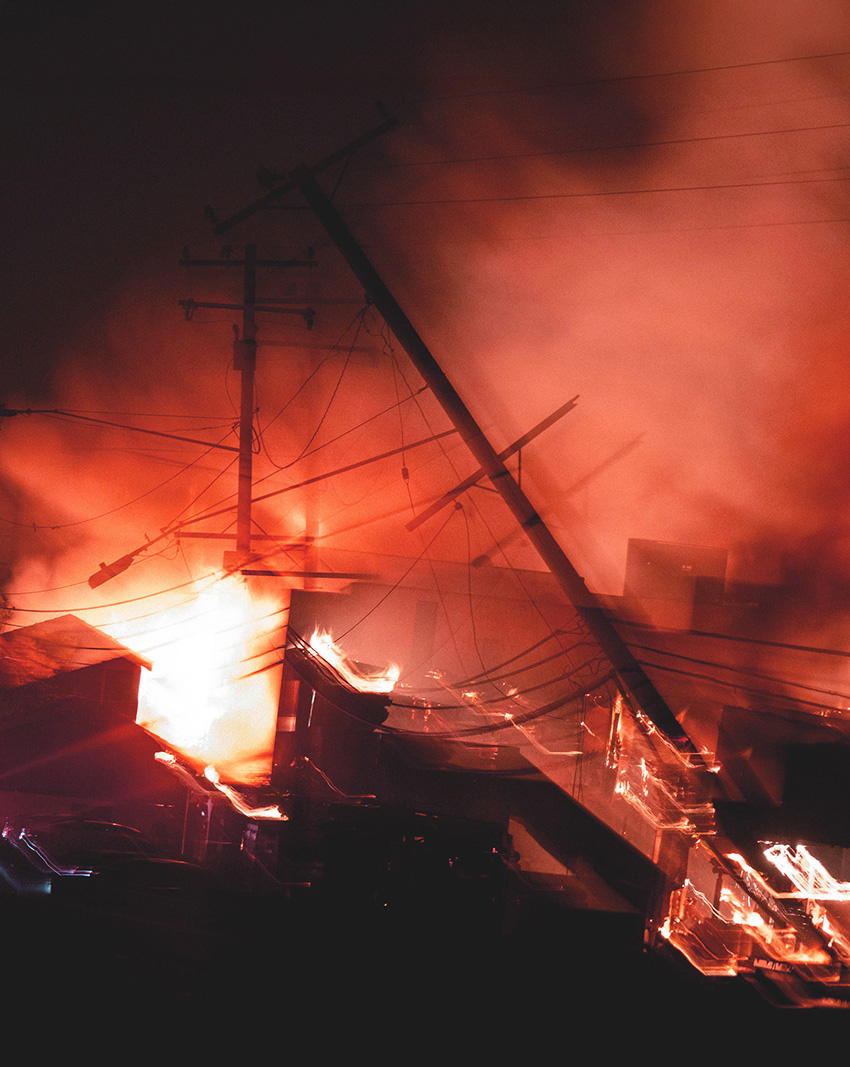
Lynch also believes that California’s rules for overhead electric line construction — known as General Order No. 95 — do not adequately consider such critical fire-related issues as the movement of sagging electrical lines under wind loads.
So, Lynch recommends that California civil engineers follow ASCE standards for meteorological loadings on overhead lines and distribution structures. ASCE standards are based on modern engineering practices and principles, Lynch explains, whereas he feels that the GO95 rules are based on older practices that are now out of date.
Lynch realizes that such changes will not come quickly — there are millions of wood poles in Southern California that need to be replaced, so “it will take a generation to change all that.”
But he urges utilities in the region to start using better design practices as well as stronger, less-flammable materials for all newly installed poles, and he says they should stockpile such poles so they are available during emergency repairs and replacements.
Fischer echoes those thoughts when she stresses that “for LA, a quick recovery is not necessarily an effective recovery. ... When we rebuild quickly, we often just rebuild the way things had been before.”
Consequently, officials have to decide “how they’re going to rebuild and where they will allow rebuilding,” Fischer says, noting that “those are really difficult conversations that cannot happen in just a single meeting, and they can’t happen only with elected officials. It must be the collective action of the community.”
Jack Hogan, P.E., Arup’s risk and resilience team leader for America’s West, notes: “There is often a concern that we overdesign or underdesign infrastructure, and designers can feel the weight of this responsibility, along with the potential liability that comes with it. That dilemma, or tension, is one that becomes acutely focused when you look at events like the recent greater Los Angeles fires, and then you consider as we rebuild, how should we size and design to account for potentially similar or even more extreme events in the future?”
Pestrella adds that in the aftermath of the LA wildfires, civil engineers generally understand what work needs to be done — but they often lack the ability to effectively communicate to their community the risks that the infrastructure faces. This inability contributes to a lack of investment in the infrastructure, especially investment to deal with the effects of a changing climate, Pestrella says.
LA and its surroundings “desperately need civil engineers more than ever,” says Heather Rosenberg, Arup’s Americas resilience, planning, and policy leader. “We urgently need to rethink the built environment and its infrastructure; (think) about the purpose of that infrastructure and its inputs and outputs; and (consider) how it can better meet the needs of people in a changing climate. This all needs to be turned into clear criteria that engineers can design to.”
Lessons learned
Fortunately for LA and its surroundings, the region “is in a better place today than it would have been” had the wildfires happened several years ago, notes Whelton. That is because Southern California will benefit from the experiences of other communities — in Colorado, Hawaii, Oregon, New Mexico, and elsewhere in California — that have confronted devastating wildfires, he says. “Because of lessons learned by the public works professionals ... who worked hard to bring their communities back, LA will be able to do that faster,” Whelton explains.
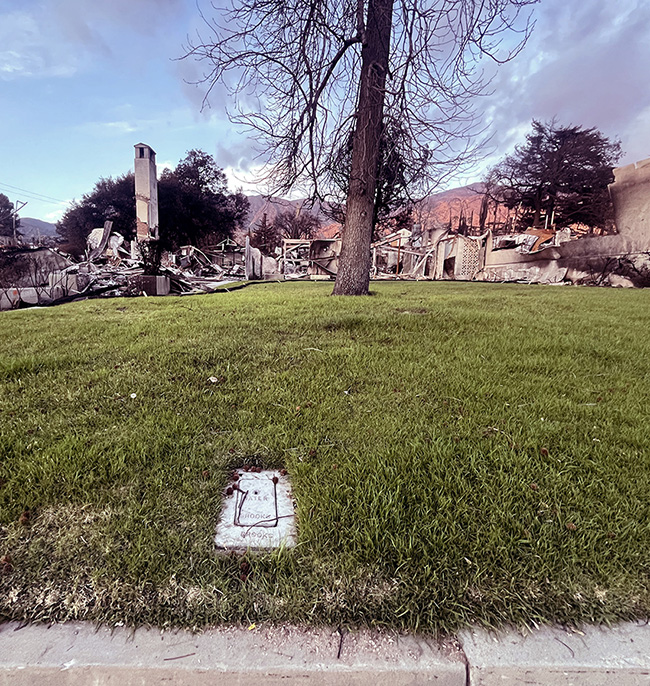
In particular, the LA County region’s public water systems will benefit from the development of a new document called the Concept of Operations (CONOPS) Plan for Water Distribution System Testing and Recovery. Authored by Whelton and other Purdue engineers, the CONOPS manual was published in October 2024 by the Water Research Foundation.
It represents “the first comprehensive guidance for public drinking water system staff, outlining the decision-making process for testing and recovering water distribution systems after a wildfire,” according to a Purdue press release.
For LA’s water system civil engineers, the CONOPS plan means “you no longer have to reach for questions and answers because of the many utility and public works professionals who have gone through this before,” says Whelton. “There is now an evidence-based decision-making approach.”
During the Marshall Fire, for example, Louisville’s public works department “had to cobble a lot of knowledge together” from news articles, internet searches, and other sources, notes Kowar. As a result, his team worked with Whelton on the CONOPS document “so that other people don’t have to guess!”
Working ahead
To help prepare the region for future wildfires, Pestrella would like to see greater coordination and cooperation among the area’s public agencies and governing jurisdictions. The political boundaries in Southern California “don’t match up with the watersheds and natural systems,” he explains, which tends to hinder better integration of efforts and responses to disasters such as wildfires.
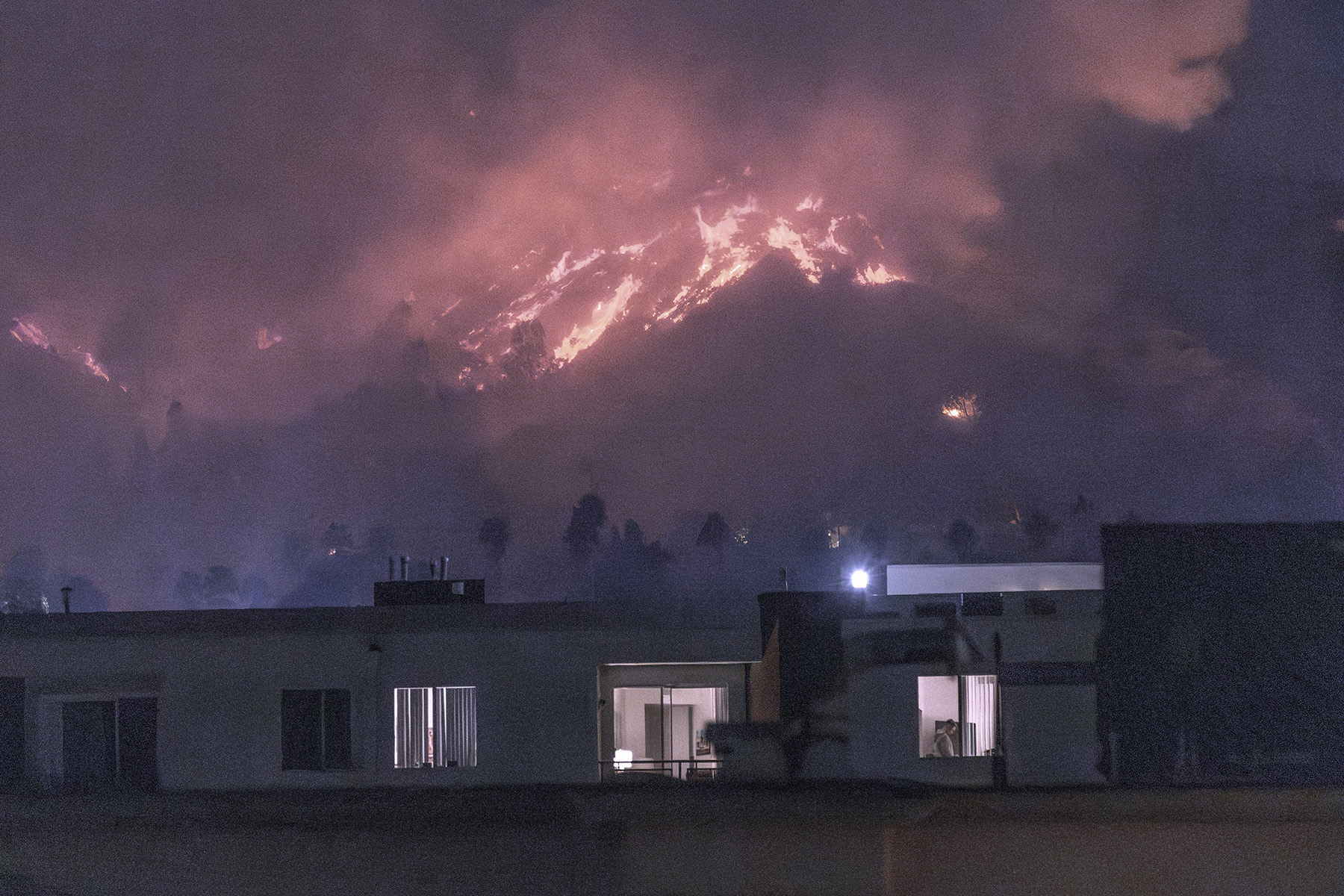
To break down such divisions, Pestrella helped create the Infrastructure LA partnership in 2022, which encourages greater cooperation between a half-dozen regional public agencies. The area also recently adopted an integrated regional water management plan, known as the LA County Water Plan, and is considering a similar measure — in the form of a Blue Ribbon commission spearheaded by LA County supervisor Lindsey Horvath — that will focus on climate action and fire safety recovery, Pestrella says.
Technology can also help civil engineers better protect the region from future wildfires. Fischer is working with other researchers on sensors that will detect if a temperature threshold in pipes has been exceeded, indicating potential contamination in drinking water systems.
Mahmoud is using his computer model to help plan evacuation routes in the event of wildfires. He also notes that the Gordon and Betty Moore Foundation’s Wildfire Resilience Initiative — which funded his research — is supporting the development of low-orbit satellites that could detect fires within 15 minutes of ignition.
In addition, aerial drones can monitor power lines to detect potential problems ranging from damaged systems to vegetation control near active power lines, as well as enabling civil engineers to study fire-damaged areas safely and quickly, says Don Jacob, chief innovation officer at Bluebeam, a software company that collaborates with the architecture, engineering, and construction industry.
Robotic technology can also assist with debris removal and site preparation, while other technologies and approaches help optimize the use of water for firefighting and help analyze fires in real time, Jacob notes.
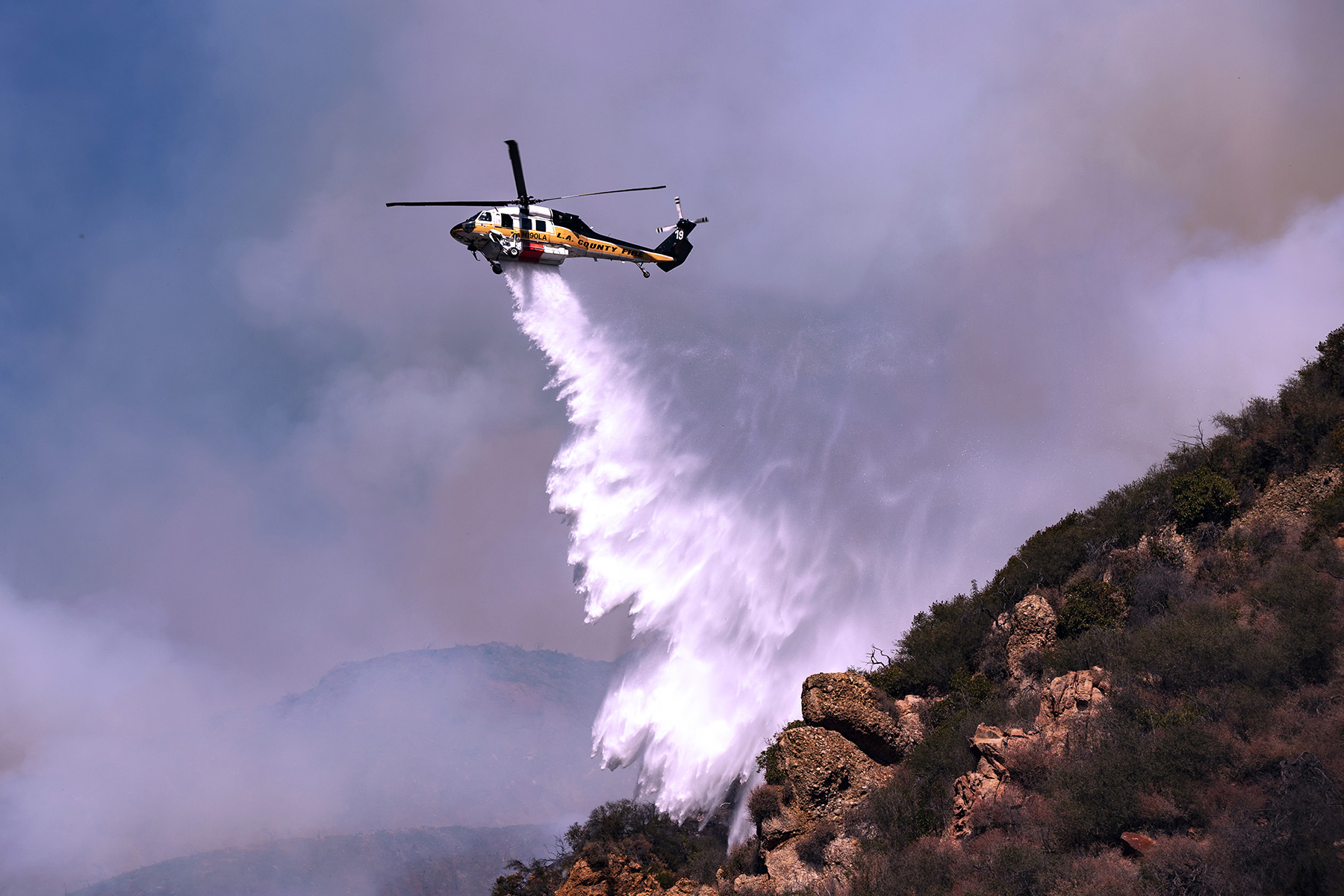
Although the Los Angeles area again promises to provide civil engineers with one of the best places to practice their profession, those engineers might also need to take time to deal with their own experiences during wildfires in their community, says Rosenberg.
“Public officials, city staff, and (engineering) practitioners can all experience trauma and its related symptoms,” she explains. “We see this after every disaster, and it can ... make it hard for engineers to communicate with key stakeholders, receive clear direction, or discuss alternatives, which can all have an impact on design.”
Recognizing the patterns of trauma can help engineers get the support they need, Rosenberg adds, and “help create space to discuss key considerations beyond building back quickly to also build back in ways that are more resilient and sustainable.”
Robert L. Reid is the senior editor and features manager of Civil Engineering.
This article first appeared in the May/June 2025 issue of Civil Engineering as “Rebuilding and protecting LA.”



